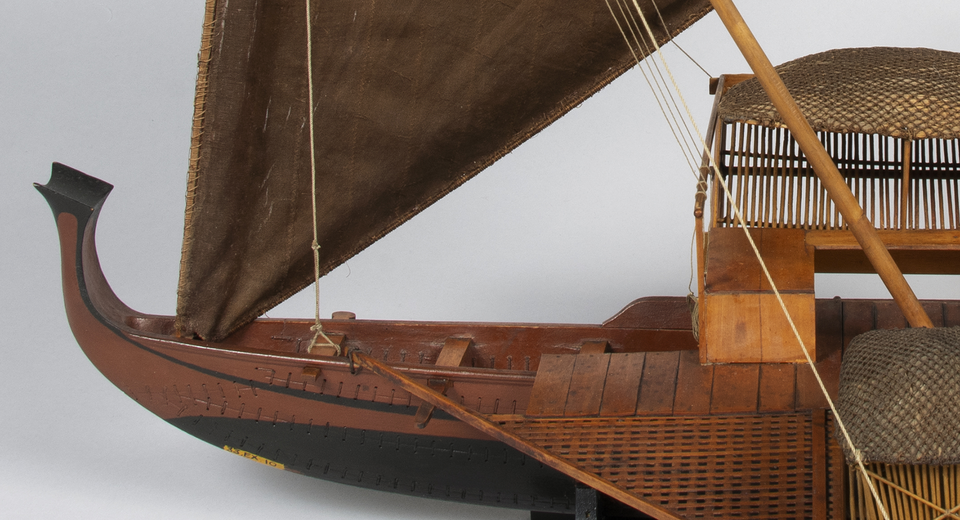Model of prao de satawal, carolina archipelago (micronesia)
Paris
Wood and plant fibre
This model reproduces a travel pirogue from the island of Satawal, part of the Caroline Islands archipelago in what is now Micronesia, in the Pacific Ocean. It is part of a unique collection set up by Admiral Pâris, a naval officer and later director of the Musée Naval du Louvre, who is regarded as one of the fathers of nautical ethnography.
The prao is a type of pirogue measuring between 13 and 14 metres in length, with a hull made up of several pieces of wood bound together with wire and pegs. This outrigger canoe bears witness to the movement and interaction between the 2,200 or so islands in the Melanesian archipelago. Identical at both ends, it has neither bow nor stern and could be sailed both forwards and backwards. She has a large outrigger on one side, which always faces into the wind, and a smaller oblique platform on the other, which prevents the boat from drifting. A small hut made of banana branches and leaves is built on top of the outrigger to house the catch.
The Musée national de la Marine houses a unique collection of around a hundred models of non-European ships, documented by Admiral François-Edmond Pâris and then assembled on his initiative. A naval officer, he took part in three naval campaigns between 1826 and 1840, travelling successively through the Pacific, China and India. During his stopovers, he undertook to draw up a very precise list of the plans and uses of the different types of craft he encountered throughout the world. He set up a rigorous survey method and produced horizontal and longitudinal views, sectional plans and drawings showing the boats in their operational context.
Several of the boats whose plans the officer brought back, including this Satawal pirogue, were then modelled and made by the workshops of the Musée naval du Louvre in 1841, just as Pâris was beginning to write his major work, Essai sur la construction navale des peuples extra-européens. When he became director of the museum in 1871, he set about opening up its collections to non-Western construction methods, and oversaw the creation of a large corpus of scale models based on his plans and drawings. The result is a unique collection of fishing, travel and cargo boats from different parts of the world.
« One of the Pros carolins that had been with us for a few hours ran out: immediately all the men went to the lee platform, and, as their outrigger was sinking, they spun the shrouds on that side, lowered the sail and mast onto the levers, where they cleared everything away, re-masted, hoisted the sail and set off again. The promptness with which everything was done showed how familiar they were with this singular manoeuvre and at the same time demonstrated the advantages of the lee platform, the idea of which they alone had. »
Collection highlight
Discover the must-see works at the Musée national de la Marine.

